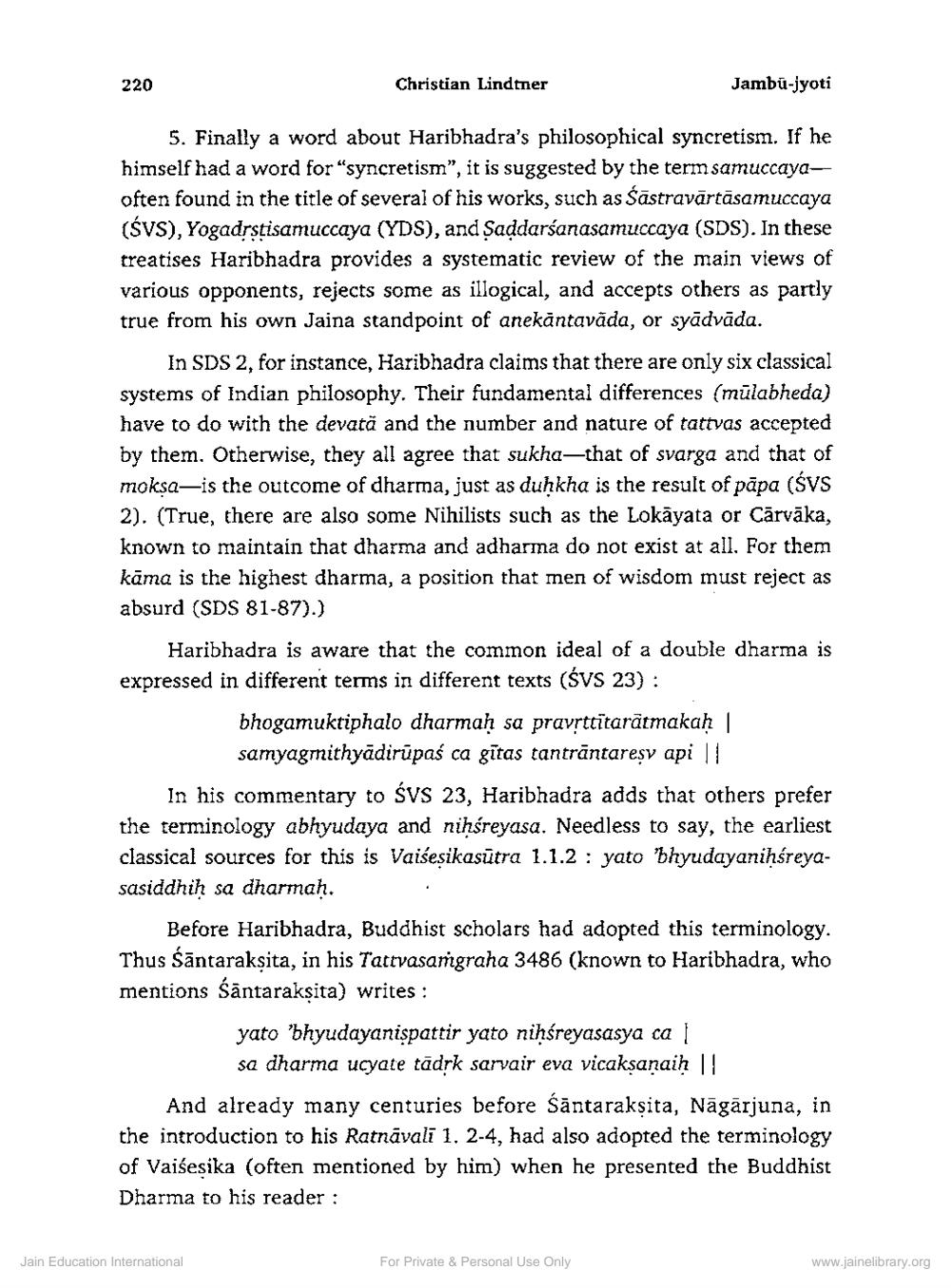________________
220
Christian Lindtner
Jambu-jyoti
5. Finally a word about Haribhadra's philosophical syncretism. If he himself had a word for "syncretism”, it is suggested by the term samuccayaoften found in the title of several of his works, such as Sastravārtāsamuccaya (SVS), Yogadrstisamuccaya (YDS), and Saddarśanasamuccaya (SDS). In these treatises Haribhadra provides a systematic review of the main views of various opponents, rejects some as illogical, and accepts others as partly true from his own Jaina standpoint of anekantavāda, or syādvāda.
In SDS 2, for instance, Haribhadra claims that there are only six classical systems of Indian philosophy. Their fundamental differences (mūlabheda) have to do with the devată and the number and nature of tattvas accepted by them. Otherwise, they all agree that sukha-chat of svarga and that of moksa is the outcome of dharma, just as duhkha is the result of papa (ŚVS 2). (True, there are also some Nihilists such as the Lokāyata or Cārvāka, known to maintain that dharma and adharma do not exist at all. For them kāma is the highest dharma, a position that men of wisdom must reject as absurd (SDS 81-87).)
Haribhadra is aware that the common ideal of a double dharma is expressed in different terms in different texts (ŚVS 23):
bhogamuktiphalo dharmaḥ sa pravsttītaratmakah ||
samyagmithyādirūpas ca gītas tantrāntareșv api || In his commentary to śVS 23, Haribhadra adds that others prefer the terminology abhyudaya and nihśreyasa. Needless to say, the earliest classical sources for this is Vaisesikasūtra 1.1.2 : yato 'bhyudayanihśreyasasiddhih sa dharmaḥ.
Before Haribhadra, Buddhist scholars had adopted this terminology. Thus śāntaraksita, in his Tattvasamgraha 3486 (known to Haribhadra, who mentions śāntaraksita) writes :
yato 'bhyudayanispattir yato niḥśreyasasya ca
sa dharma ucyate tādrk sarvair eva vicaksanaih 1! And already many centuries before śāntarakṣita, Nāgārjuna, in the introduction to his Ratnávali 1. 2-4, had also adopted the terminology of Vaišesika (often mentioned by him) when he presented the Buddhist Dharma to his reader:
Jain Education International
For Private & Personal Use Only
www.jainelibrary.org




